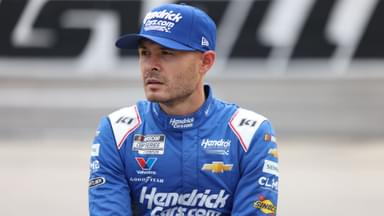NASCAR has one of the longest seasons in professional sports. The Cup season has been staging a consistent lineup of 36 races annually for the past 24 years. The introduction of greater parity among the teams — from the speed of the cars to equipment, models, and so on — has opened up the competition and diversified the roster of winners, keeping things exciting for the fans. The stakes are so high that NASCAR may not be able to shorten the season even if it wanted to. And the promotion shouldn’t, says Joey Logano.
Advertisement
The three-time Cup Series champion is largely against reducing the number of races. While the personal lives of drivers would be enriched, the sport as a whole wouldn’t grow at the pace it is capable of, feels Logano, adding that it wouldn’t make economic sense either.
“I would like that but there’s so many other things. I think it kills the momentum of the sport for one I think that’s not really good. I think if you shorten the season well everyone you got to justify everybody’s salary somehow,” elaborated Logano.
“So, that’s got to go down. Some of us are going to make less money. So there’s less sponsors there’s less like all that like comes down everything shrinks a little bit,” he added.
However, the respite that a lesser number of races provide may lead to better racing.
This year, for instance, there was a two-week break coinciding with the Olympic Games in Paris. Kyle Busch, who was having a lackluster season till then, returned with renewed vigor to finish the last four races of the regular season with great results. He secured two second-place finishes in two of the races along with another top-5 result.
The length of the season has been stretched and reduced many times in NASCAR’s history. The number of races in a year have fluctuated between 8 to 62, with the first year, 1949, having the least. The busiest season was in 1964.
So tinkering with the season length is not something new in NASCAR. The idea has many supporters too, including Alex Bowman.
Bowman and Logano are not on the same page
The weekly grind at various racetracks across the country is indeed a taxing ordeal for NASCAR drivers. However, Hendrick Motorsports’ Bowman feels that the ordeal of the drivers pales in comparison to what the road crews endure. And they would benefit the most from a trimmed-down schedule, said the pilot of the #48 car.
The allure of traveling across the country while racing wanes with the grueling work hours involved. Bowman highlighted that road crew members often work until 3 a.m. and then regroup for an 8 a.m. start.
“Their hours are insane. There are nights at HMS they’re there till 2 or 3 o’clock in the morning. The cars have to be ready, there’s no way around it…,” added Bowman.
His teammate, Chase Elliott, had voiced his thoughts on the length of the NASCAR Cup Series schedule back in 2022. He favored a more compact schedule spread over a shorter period, regardless of the number of races, believing that such a change would be better for TV ratings as well.
“I’m a firm believer that less is more, in the sense of the timing of a schedule and when we could end our season to make the most for TV ratings and things of that nature. I think we could do better, personally,” Elliott had tweeted.
It would be interesting to know what Denny Hamlin and Kyle Busch think about trimming the season down.







